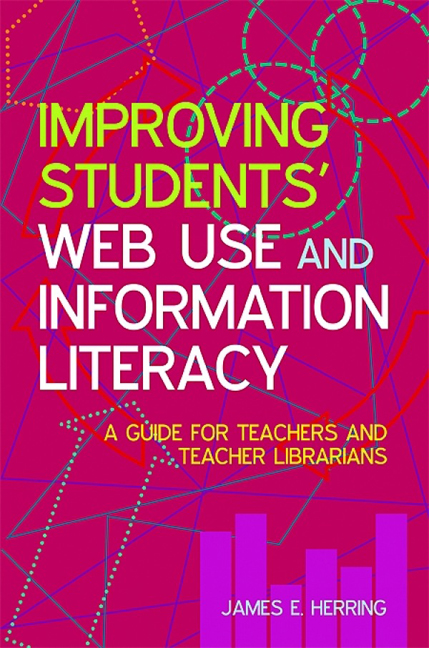Book contents
- Frontmatter
- Dedication
- Contents
- Acknowledgements
- Introduction
- 1 The big picture: learning and teaching in today's schools
- 2 Finding and using information on the web
- 3 Evaluating websites
- 4 Web 2.0 and schools
- 5 Information literacy
- 6 Improving student use of the web
- 7 Developing learning websites for student use - design and tools
- 8 Developing learning websites for student use - content
- 9 The next phase of ICT in schools
- Bibliography
- Index
6 - Improving student use of the web
Published online by Cambridge University Press: 08 June 2018
- Frontmatter
- Dedication
- Contents
- Acknowledgements
- Introduction
- 1 The big picture: learning and teaching in today's schools
- 2 Finding and using information on the web
- 3 Evaluating websites
- 4 Web 2.0 and schools
- 5 Information literacy
- 6 Improving student use of the web
- 7 Developing learning websites for student use - design and tools
- 8 Developing learning websites for student use - content
- 9 The next phase of ICT in schools
- Bibliography
- Index
Summary
Introduction
Using the web for school work is now an integral part of the modern student's life. The web is the first port of call if students need information for subject learning or for an assignment. Outside school, the web is also the key information source for most students, although not all students have web access at home. As the web is now such a large part of many students’ lives, it is surprising that, in most schools, little time is allocated to teaching students how to be not only web users, but web learners. A web user is a person who uses the web, but this use may be superficial, mainly technical and involve little or no reflection. If students are to be web learners, they will develop effective search strategies (derived from an analysis of their purpose), critically evaluate what they find on the web, select information that is relevant to their purpose, use information and ideas found on the web ethically and effectively, and will learn from each use of the web, by reflecting on what they found, and how they found it. In most schools, there is an assumption that students will be web learners as well as web users, but there is little evidence of this, either anecdotally or in the research literature (Herring, 2010; Kuiper, Volman and Terwel, 2008).
To develop students from being web users to web learners, there needs to be a focus on teaching web learning skills to students, and to reinforce these skills across the school curriculum. If schools can develop an integrated approach to web learning, there is an opportunity for students to extend their use of information literacy skills and abilities and develop their own model of information literacy.
This chapter seeks to provide teachers and teacher librarians with ideas and examples for teaching students how to improve their use of the web. Most students need to be provided with scaffolding, which will help them to use the web effectively and to reflect on that use. The chapter focuses on key aspects of information literacy, which relate to students’ use of the web, including planning for web searching, using effective search strategies, evaluating websites and web-based information, reading for information, reflecting on web use, and developing a personal model for web use.
- Type
- Chapter
- Information
- Improving Students' Web Use and Information LiteracyA Guide for Teachers and Teacher Librarians, pp. 77 - 90Publisher: FacetPrint publication year: 2010



